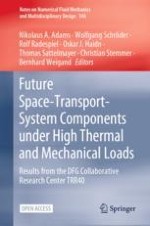1 Introduction
1.1 Summary of Previous Investigations
1.1.1 Combustion Instability at DLR
1.1.2 Flame Radiation at TUM
2 Experimental Technique
2.1 Experimental Setup
2.1.1 Combustor
2.1.2 Operating Conditions
Description | Variable | Unit | Mean value |
|---|---|---|---|
Combustion chamber pressure | \(p_{cc}\) | [bar] | 77.6 |
Propellant mixture ratio | ROF\(^\mathrm{a}\) | [–] | 5.3 |
Hydrogen injection temperature | \(T_{H2}\) | [K] | 102 |
LOX injection temperature | \(T_{O2}\) | [K] | 115 |
Momentum flux ratio | J | [–] | 21 |
